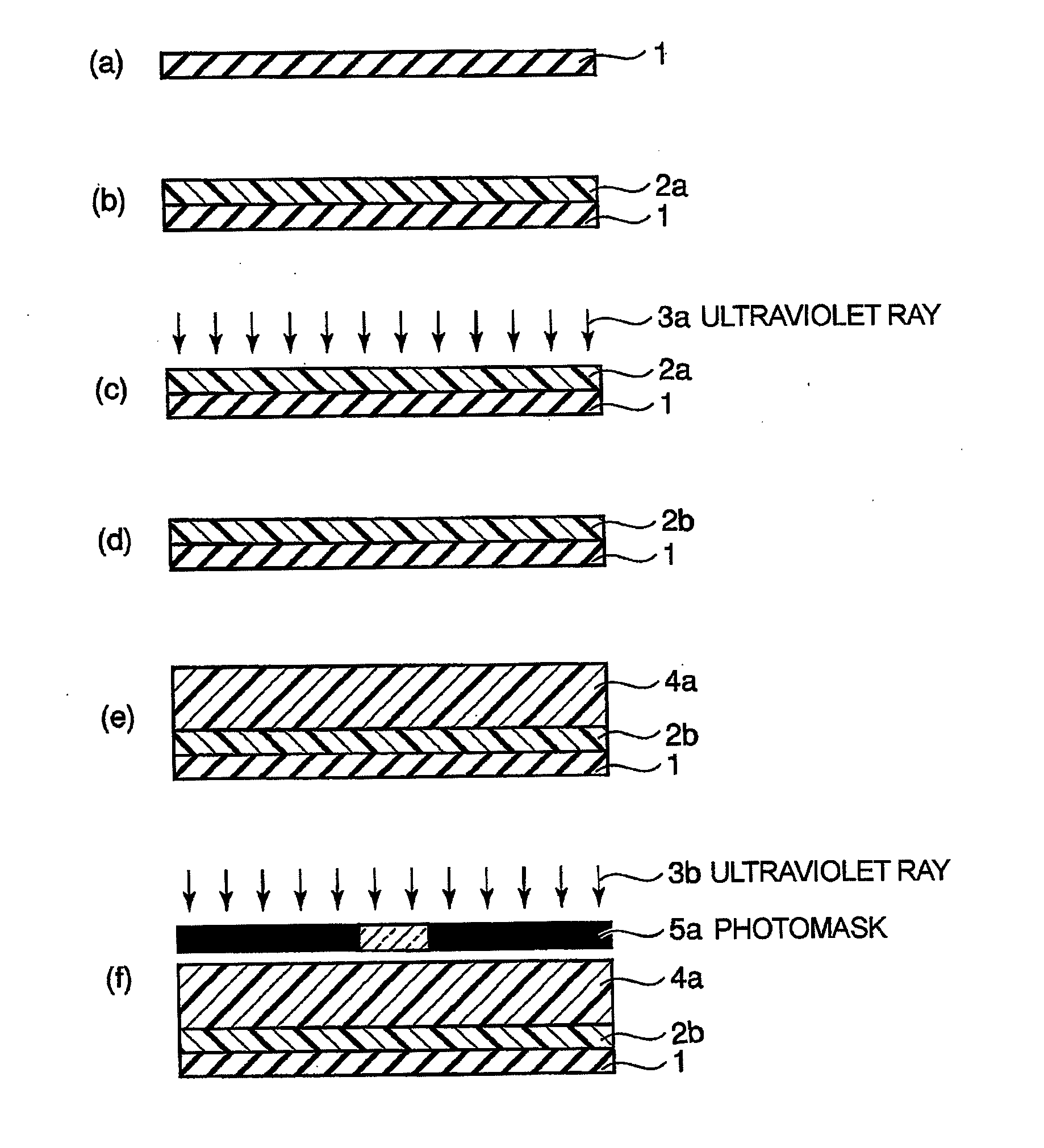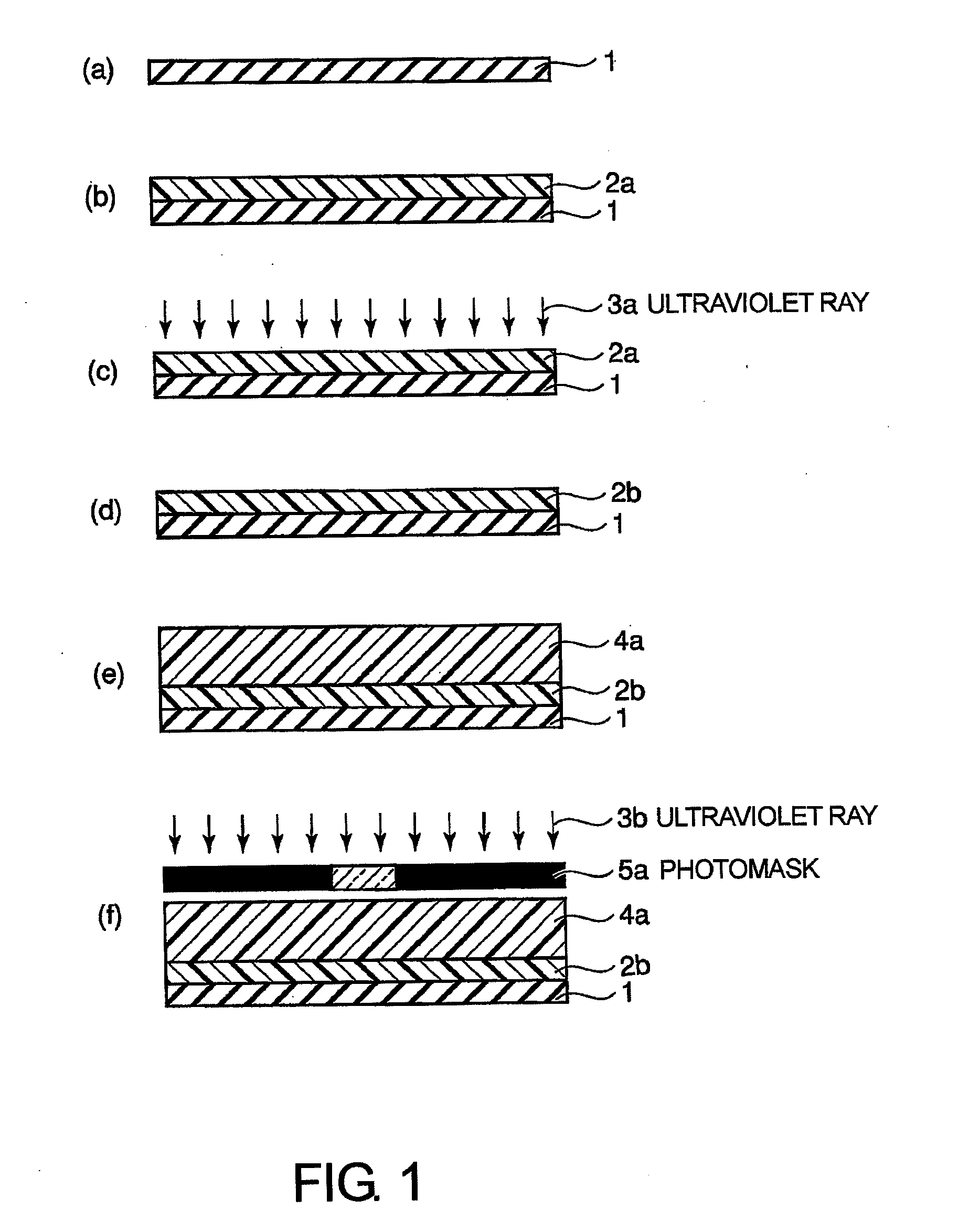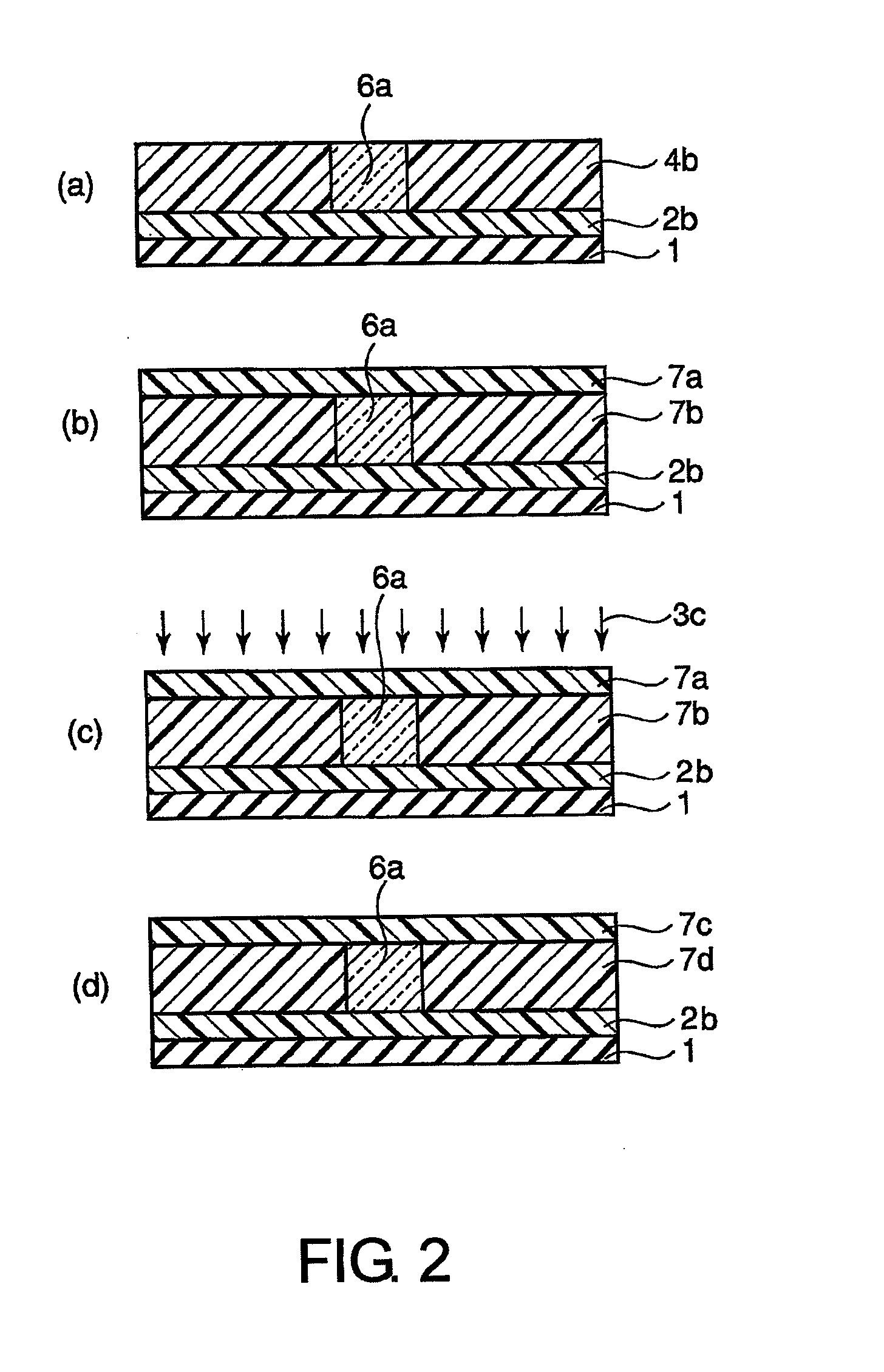Photosensitive resin composition, method for control of refractive index, and optical waveguide and optical component using the same
a technology of optical waveguide and resin composition, applied in the field of optical waveguide, can solve the problems of large transmission loss in conventional electric wiring, high production cost of glass waveguide, and high requirements of glass waveguide, and achieve excellent transmission characteristics, low propagation loss, and high accuracy.
- Summary
- Abstract
- Description
- Claims
- Application Information
AI Technical Summary
Benefits of technology
Problems solved by technology
Method used
Image
Examples
example 1
[0084]First, 7.77 (g) of 4,4′-diaminodiphenyl ether (ODA) were dissolved in 100 (g) of dimethylacetamide, and the solution was stirred well at room temperature. After that, 10.48 (g) of N,O-bis(trimethylsilyl)-trifluoroacetamide (BSTFA) were added to the solution, and the mixture was stirred under a nitrogen atmosphere at room temperature for 30 minutes. After that, 17.23 (g) of 4,4′-hexafluoroisopropylidenediphthalic dianhydride (6FDA) were added to the mixture, and the whole was stirred under a nitrogen atmosphere at room temperature for one day, whereby a polyamic acid solution (1) having a solute concentration of 20 wt % was synthesized.
[0085]The 20-wt % polyamic acid solution (1) thus obtained, 3,4-epoxycyclohexanecarboxylic acid-3′,4′-epoxycyclohexylmethyl as an epoxy compound, and a photo-acid-generating agent 4-thiophenoxyphenyldiphenylsulfonium hexafluoroantimonate were mixed according to the composition shown in Table 1, and the mixture was stirred at room temperature for ...
example 2
[0088]8.76 (g) of bis(4-aminocyclohexyl)methane (DCHM) were loaded into 100 (g) of γ-butyrolactone, and the mixture was stirred well at room temperature. After that, 20.74 (g) of N,O-bis(trimethylsilyl)-trifluoroacetamide (BSTFA) were added to the mixture, and the whole was stirred under a nitrogen atmosphere at room temperature for 30 minutes. After that, 34.09 (g) of 4,4′-hexafluoroisopropylidenediphthalic dianhydride (6FDA) were added to the resultant, and the mixture was stirred under a nitrogen atmosphere at room temperature for one day, whereby a polyamic acid solution (2) having a solute concentration of 30 wt % was synthesized. The 30-wt % polyamic acid solution (2) thus obtained, an epoxy compound, and a photo-acid-generating agent 4-thiophenoxyphenyldiphenylsulfonium hexafluoroantimonate were mixed according to the composition shown in Table 2, and the mixture was stirred at room temperature for 2 hours, whereby a mixed solution was obtained.
[0089]The above mixture was fil...
example 3
[0091]The mixed liquid having the composition 4 shown in Example 2 was filtrated with a 0.45-μm filter made of Teflon (registered trademark), whereby a photosensitive resin composition for the production of a waveguide was prepared. Next, the above photosensitive resin for the formation of the clad was applied onto a silicon substrate having a diameter of 4 inches by spin coating, and the resultant was subjected to a heat treatment at 70° C. for 20 minutes, whereby a coating film having a thickness of 10 μm was formed. Next, the entire surface of the coating film was exposed to ultraviolet light (at an exposure value of 1 J / cm2) from a high-pressure mercury lamp (250 W). After the exposure, the resultant was subjected to a heat treatment in a stream of nitrogen at 120° C. for 20 minutes, and, furthermore, was thermally imidated at each of 150° C. and 200° C. for 1 hour, whereby a lower clad layer was formed. Next, the above photosensitive resin was applied onto the lower clad layer ...
PUM
| Property | Measurement | Unit |
|---|---|---|
| wavelength | aaaaa | aaaaa |
| temperature | aaaaa | aaaaa |
| diameter | aaaaa | aaaaa |
Abstract
Description
Claims
Application Information
 Login to View More
Login to View More - R&D
- Intellectual Property
- Life Sciences
- Materials
- Tech Scout
- Unparalleled Data Quality
- Higher Quality Content
- 60% Fewer Hallucinations
Browse by: Latest US Patents, China's latest patents, Technical Efficacy Thesaurus, Application Domain, Technology Topic, Popular Technical Reports.
© 2025 PatSnap. All rights reserved.Legal|Privacy policy|Modern Slavery Act Transparency Statement|Sitemap|About US| Contact US: help@patsnap.com



